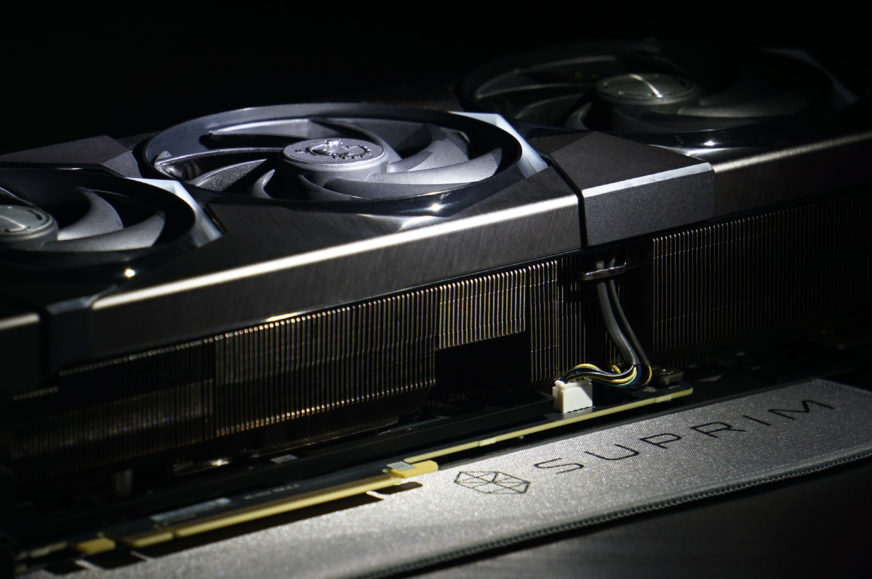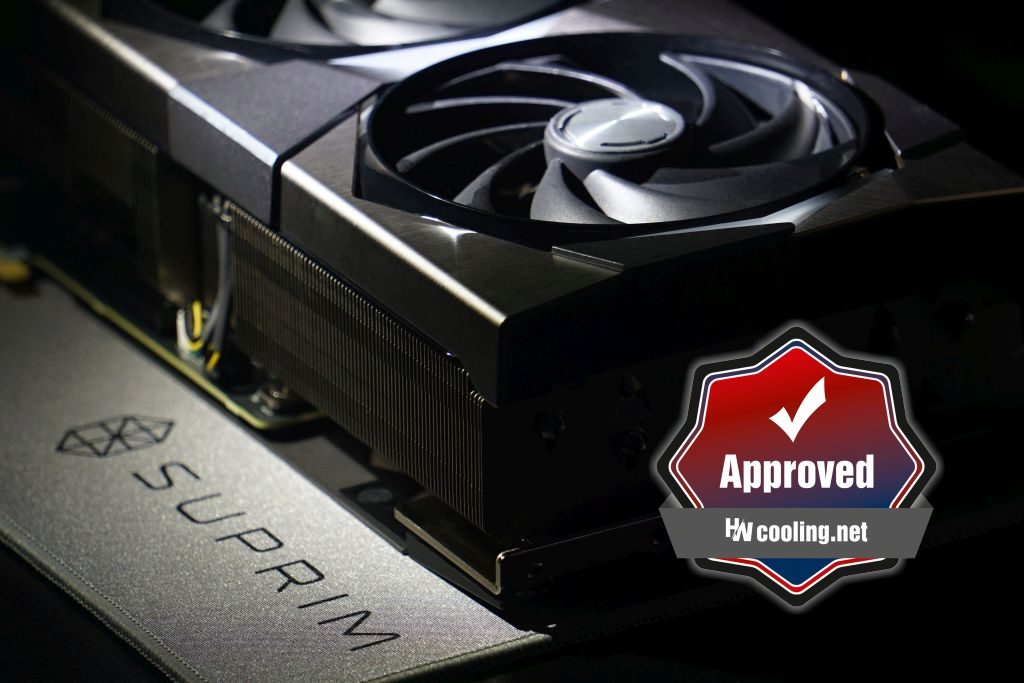Conclusion
After the GeForce RTX 4080 graphics cards, which wasn’t to many people’s taste due to the higher price, Nvidia has released a significantly cheaper GPU for the GeForce RTX 4070 Ti. The performance versus the RTX 4080 is admittedly noticeably weaker, but percentage-wise not by as much as the roughly two-thirds lower price of the RTX 4070 Ti. In our tests, we analyze MSI’s non-reference design from the top-of-the-line Suprim X series.
Conclusion
The RTX 4070 Ti’s gaming performance is approximately 20% (without raytracing graphics) to 25% (with RT) below the RTX 4080. This puts it very just above the top GeForce and Radeon graphics card models from the previous generation. However, the RTX 4070 Ti is always the lower-power and more efficient choice compared to them, although compared to the RTX 4080, its efficiency is lower.
From a raw performance perspective, the RTX 4070 Ti is some 75–80% of the RTX 4080, but at nearly 90% (of the RTX 4080’s) power draw. This is partly due to the fact that the RTX 4070 Ti partially compensates for the lack of computing units with higher clock speeds (with a more aggressive power supply), thus trying to squeeze out gaming performance in particular. However, the latter is still significantly higher per unit of power draw than with the RTX 3080 (+ approx. 70%) or the RX 6900 XT (+ approx. 50%).
For gaming, the RTX 4070 Ti is suitable up to 1440p resolution (especially for monitors with very high refresh rates) or up to 2160p, where the CPU bottleneck is the smallest. With bright exceptions (like Cyperpunk 2077), the vast majority of games on the RTX 4070 Ti don’t drop below 60 fps, even at UHD resolution with graphical detail set to maximum. With ray-tracing, it’s already “worse” and DLSS needs to be applied for smooth or smoother operation. For example, you can bring Control (with DLSS on “performance”) from an average of 34 to 103 fps, Cyperpunk 2077 from an unplayable 18 to 73 fps. Games with less extensive RT graphics, such as Shadow of the Tomb Raider or Battlefield V, are snappy on the RTX 4070 Ti even at native UHD resolution.
Speed increase in games over the RTX 3090 (Ti) occurs in the vast majority of cases, but there are also situations where the opposite trend can be observed. Such games include Total War Saga: Troy or, paradoxically, even the undemanding Age of Empires II: DE. The power draw is also low in this game, so obviously the GPU resources are not being properly utilized.
A significantly above-average increase in gaming performance over the RTX 3080, for example, is in DOOM Eternal, up to 20%. Rather than comparing to older graphics cards, we’ll be prospectively interested in how the RTX 4070 Ti as well as the RTX 4080 will stand up against the competing Radeon RX 7900 XT.
For those not buying a graphics card for gaming: The computing performance available for 3D rendering is between the RTX 4080 and RTX 3080. The RTX 4070 Ti is roughly 25–28% away from both, in one case (RTX 3080) to the plus, in the other (RTX 4080) to the minus. If you are interested in performance in Autodesk applications (3Ds Max, Creo, Maya, …) or acceleration of graphic editors (Adobe Photoshop or Affinity Photo), we’ve tested that as well.
And now more specifically to the tested RTX 4070 Ti – the Suprim X. GPU clock speeds are super high in boost, 2840–2860 MHz, but that won’t be the case with the cheaper models.
The cooler is perfect, it doesn’t let the GPU or memory temperatures get high and at the same time even at maximum performance it is extremely quiet regardless of the BIOS (Silent/Performance), one of the quietest in the tests. It’s practically on par with the quiet RTX 3050 Ventus 2X 8G OC with less than half the power draw. However, again this is somewhat spoiled by the coils, which are considerably more annoying than the aerodynamic component of the sound. While their noise intensity is lower than the RTX 4080, they’re still louder than, say, on the RTX 3090 Gaming X Trio. It is technically quite possible to make significantly quieter coils, but apparently the voice of the people on this matter is too weak to motivate the manufacturers in any way. Either way, though, the execution of the MSI RTX 4070 Ti Suprim X graphics card is top-notch, and it doesn’t leave much room for other non-reference variants to excel at anything.
English translation and edit by Jozef Dudáš
| MSI RTX 4070 Ti Suprim X 12G |
| + Veľmi vysoký výkon (vhodný i na hranie v 2160p/4K) |
| + Veľmi slušný výkon s ray-tracingom |
| + Atraktívna efektivita – vysoký výkon na jednotku spotreby |
| + Exkluzívna podpora DLSS (3), CUDA a OptiX |
| + V kontexte iných (lacnejších) RTX 4070 Ti veľmi vysoké frekvencie GPU |
| + Podpora kódovania AV1 |
| + Súčasťou balenia je i držiak/podpera slotu PCI Express |
| + Efektné osvetlenie RGB LED |
| + Atraktívnejší pomer cena/výkon ako u RTX 4080 |
| + Veľmi tichý chladič Tri Frozr 3S |
| - V porovnaní s RTX 4080 nižšia efektivita (nižší výkon na watt) |
| - Celkovo väčšie rozmery a horšia kompatibilita so skrinkami |
| - DisplayPort iba vo verzii 1.4a (týka sa všetkých RTX 4070 Ti, resp. grafických kariet GeForce Ada Lovelace) |
| Odporúčaná koncová cena: 1055 eur/24 999 Kč |
We are grateful to e-shopu Datacomp for their cooperation in providing the tested hardware
- Contents
- MSI RTX 4070 Ti Suprim X 12G in detail
- Table of parameters
- Methodology: performance tests
- Methodology: how we measure power draw
- Methodology: noise and sound measurement
- Methodology: temperature tests
- Test setup
- 3DMark
- Age of Empires II: DE
- Assassin’s Creed: Valhalla
- Battlefield V
- Battlefield V with DXR
- Borderlands 3
- Control
- Control with DXR and DLSS
- Counter-Strike: GO
- Cyberpunk 2077
- Cyberpunk 2077 with DLSS
- Cyberpunk 2077 with DXR (and DXR with DLSS)
- DOOM Eternal
- F1 2020
- FIFA 21
- Forza Horizon 4
- Mafia: DE
- Metro Exodus
- Metro Exodus with DXR and DLSS
- Microsoft Flight Simulator
- Red Dead Redemption 2 (Vulkan)
- Red Dead Redemption 2 (Dx12)
- Shadow of the Tomb Raider
- Shadow of the Tomb Raider with DXR
- Total War Saga: Troy
- Wasteland 3
- Overall gaming performance and performance per euro
- CompuBench (OpenCL)
- SPECviewperf 2020 and SPECworkstation 3
- FLOPS, IOPS and memory speed tests
- 3D rendering 1/2 (LuxMark a Blender@Cycles)
- 3D rendering 2/2 (Blender@Radeon ProRender and Eevee)
- Photo editing (Adobe Photoshop, Lightroom and Affinity Photo)
- Broadcasting (OBS and Xsplit)
- Password cracking
- GPU clock speeds
- GPU and VRAM temperatures
- Net GPU power draw and performance per watt
- Analysis of 12 V branch power supply (higher load)
- Analysis of 12 V branch power supply (lower load)
- Analysis of 3,3 V branch power supply
- Noise level
- Frequency response of sound
- Conclusion












